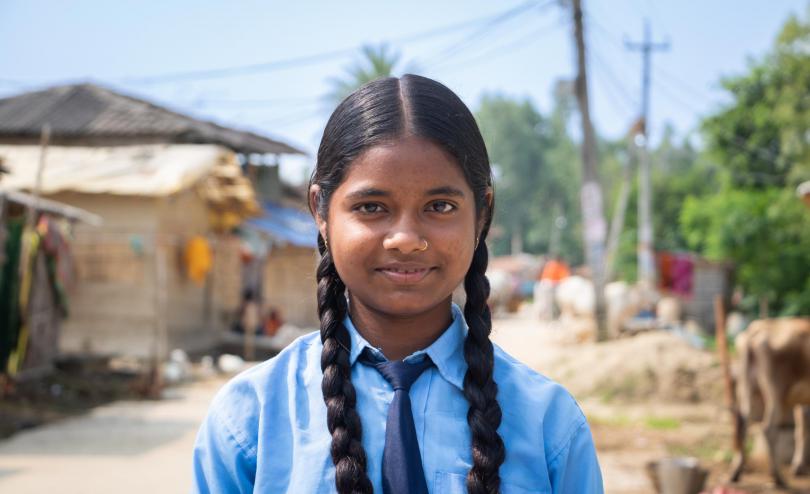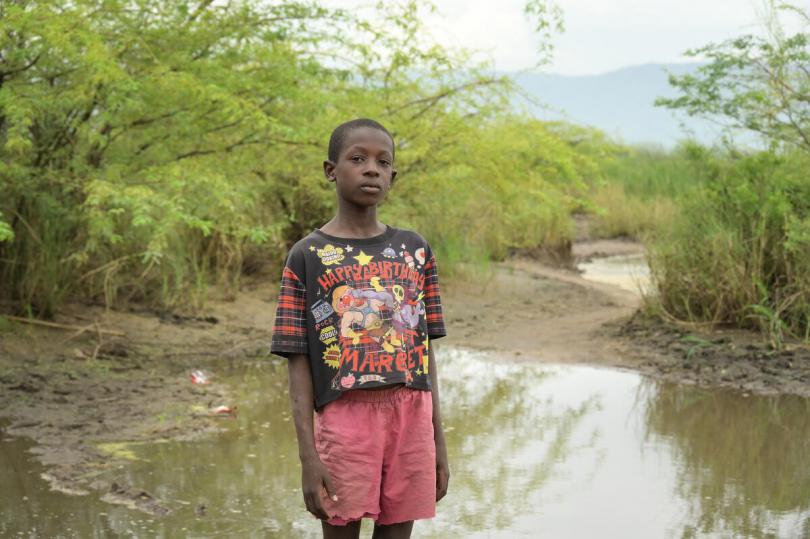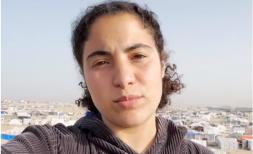2.4 billion reasons to end the global climate & inequality crisis

Kamani, 14, lives with her family in a small village in Nepal's Mahottari District, which is often hit by flash floods.
It is widely acknowledged that we are living through a period of global crisis, fuelled by the climate emergency, inequality, the Covid-19 pandemic and conflict. This is currently manifesting in a global food crisis that is taking a life every four seconds around the world.
Today, Save the Children is releasing a new report, Generation Hope: 2.4 billion reasons to end the global climate and inequality crisis, which reveals the sheer scale of the crisis and its impacts on children, with a focus on the toxic interconnections between the climate crisis and inequality.
The report profiles insights from our global conversation with over 54,000 children from more than 40 countries on climate and inequality. From hearing their stories, it’s clear that this global crisis is having a profound impact on children’s lives, in both lower and higher income countries. Whether through extreme weather events that damage homes, schools and livelihoods; spiralling costs of living which are leaving families struggling to put food on the table; or through anxiety and fear for the future. In some cases, these events can result in increases in child labour or marriage as families are forced to find ways to bolster income or save costs.

'Global Heating' by Yurisha, 17, from Nepal. Yurisha says “I want to make people aware about pollution, climate change and encourage them to save the earth by decreasing pollution.”
It was also clear from the insights that children shared with us that the climate emergency is deeply bound up with inequality – most notably across two key dimensions. The first is age. Children are bearing the brunt because they are at a unique stage in their physical and emotional development, and because they have longer to live with the impacts of the climate crisis than adults. This was powerfully summed up by an 18-year-old activist we spoke with in Norway when she explained the motivation behind children’s campaigning: “It is our Earth and future on the line, after all.”
The second dimension is that the climate emergency is also tied up with inequalities in income, wealth and power. Children shared heartbreaking stories with us about how children most affected by poverty and discrimination are being hit hardest by the impacts of climate change. “Floods since 2019 have been washing away our farm… Sometimes my parents find it difficult to feed us well,” shared a 14-year-old girl from Nigeria. Many observed how more affluent families often have greater capacity to protect themselves. As one child in Iraq explained, “If war breaks out, or a flood has occurred, then people who are better off can move or leave the affected places or countries to more safer ones. However, less affluent people will have no choice but to stay under bombardment, die, be displaced or become refugees.”
One boy from Kenya put it simply: “Poverty is a brother to climate change”. It is therefore extremely worrying that our new data analysis, found that a staggering 774 million children – a third of the global child population – face the dual threat of poverty and being at high risk from the impacts of climate change. In fact, 183 million face the triple threat of high climate risk, poverty and conflict.
These children will be pushed deeper into poverty in the years ahead if crises continue to hit with the frequency and severity they have in recent years – a likely scenario given the growing climate emergency and its magnifying effect on other shocks.

Luciano, 12, standing by the devastation left by Cyclone Ana and floods in Malawi.
We are releasing this research at a moment when global leaders are preparing to travel to two critical global meetings in the weeks ahead – the COP27 Summit in Egypt and the G20 Summit in Indonesia. At these meetings, leaders have the opportunity to drive global cooperation on solutions for the climate emergency, end child poverty and unlock critical financing to stem this moment of crisis. It is imperative that they grasp this opportunity with both hands.
This message came through loud and clear from our dialogues with children. Children are a growing force for change, and their campaigning and activism is tireless. They have a right to be heard. “Giving young people a voice and platform to speak from would be the most useful thing; they already have the ideas,” as a 15-year-old girl in Guatemala said
Children are calling on adults to join them in their push for a greener and more just planet. The vast majority of children who spoke with us believed that adults should be doing more. Many put particular emphasis on the role of governments, with some highlighting the particular responsibility of high-income, high-emissions countries to support lower-income and climate-vulnerable countries that have done the least to cause the climate crisis, but whose children are being most heavily impacted.
Governments must listen to these demands, and prioritise the urgent actions that are needed – to meet immediate humanitarian needs, protect and support children on the frontlines of the inequity and climate crisis, cut emissions and invest in their futures.
In the words of one child from India, “Unity is the greatest strength of all, so we need to stand together in this fight.” World leaders gathering in Egypt and Indonesia in the coming weeks must carry this message with them into their negotiations. The world’s 2.4 billion children need and deserve change. It must be delivered.
Shocked that a third of all children around the world are facing both poverty and being at high risk from the impacts of climate change? Would you like to hear more voices from children on this topic? Read our latest report on Generation Hope.







